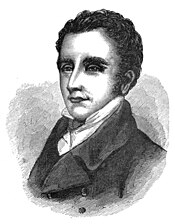
Archibald David Constable was a Scottish publisher, bookseller and stationer.

William Coxe was an English historian and priest who served as a travelling companion and tutor to nobility from 1771 to 1786. He wrote numerous historical works and travel chronicles. Ordained a deacon in 1771, he served as a rector and then archdeacon of Bemerton near Salisbury from 1786 until his death.
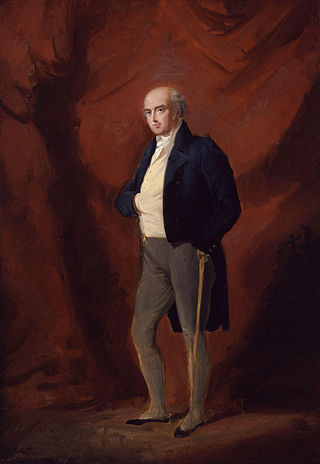
Henry Richard Vassall-Fox, 3rd Baron Holland of Holland, and 3rd Baron Holland of Foxley PC, was an English politician and a major figure in Whig politics in the early 19th century. A grandson of Henry Fox, 1st Baron Holland, and nephew of Charles James Fox, he served as Lord Privy Seal between 1806 and 1807 in the Ministry of All the Talents headed by Lord Grenville and as Chancellor of the Duchy of Lancaster between 1830 and 1834 and again between 1835 and his death in 1840 in the Whig administrations of Lord Grey and Lord Melbourne.
Châtelain was originally the French title for the keeper of a castle.

Sir Henry Taylor was an English dramatist and poet, Colonial Office official, and man of letters.

Rees's Cyclopædia, in full The Cyclopædia; or, Universal Dictionary of Arts, Sciences, and Literature was an important 19th-century British encyclopaedia edited by Rev. Abraham Rees (1743–1825), a Presbyterian minister and scholar who had edited previous editions of Chambers's Cyclopædia.

Thomas Moule was an English antiquarian, writer on heraldry, and one of Victorian England's most influential map-makers. He is best known for his popular and highly decorated county maps of England, steel-engraved and first published separately between 1830 and 1832.
George Robert Gleig was a Scottish soldier, military writer, and priest.

Thomas Joseph Pettigrew, sometimes known as "Mummy" Pettigrew, was a surgeon and antiquarian who became an expert on Ancient Egyptian mummies. He became well known in London social circles for his private parties in which he unrolled and autopsied mummies for the entertainment of his guests.
Anthologion, or Anthologue, is a breviary that has been in use among the Greeks.

William Miller was a Scottish Quaker line engraver and watercolourist from Edinburgh.
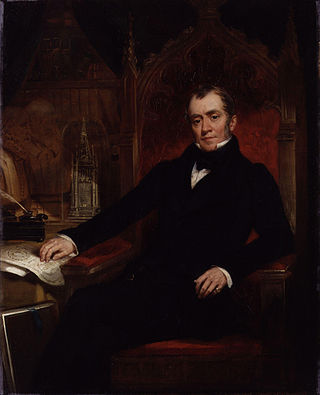
John Britton was an English antiquary, topographer, author and editor. He was a prolific populariser of the work of others, rather than an undertaker of original research. He is remembered as co-author of nine volumes in the series The Beauties of England and Wales (1801–1814); and as sole author of the Architectural Antiquities of Great Britain and Cathedral Antiquities of England.

Paternoster Row was a street in the City of London that was a centre of the London publishing trade, with booksellers operating from the street. Paternoster Row was described as "almost synonymous" with the book trade. It was part of an area called St Paul's Churchyard.
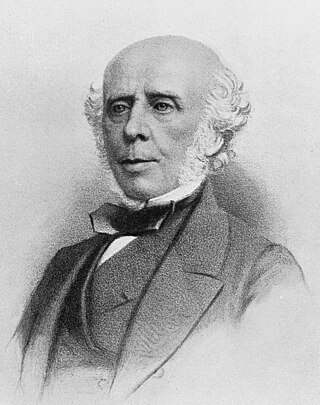
William Mackenzie was a Scottish ophthalmologist. He wrote Practical Treatise of the Diseases of the Eye, one of the first British textbooks of ophthalmology.

This is a bibliography of works by Mary Shelley, the British novelist, short story writer, dramatist, essayist, biographer, and travel writer, best known for her Gothic novel Frankenstein: or, The Modern Prometheus (1818). She also edited and promoted the works of her husband, the Romantic poet and philosopher Percy Bysshe Shelley. Until the 1970s, Mary Shelley was known mainly for her efforts to publish Percy Shelley's works and for Frankenstein. Recent scholarship has yielded a more comprehensive view of Mary Shelley’s achievements, however. Scholars have shown increasing interest in her literary output, particularly in her novels, which include the historical novels Valperga (1823) and Perkin Warbeck (1830), the apocalyptic novel The Last Man (1826), and her final two novels, Lodore (1835) and Falkner (1837). Studies of her lesser-known works such as the travel book Rambles in Germany and Italy (1844) and the biographical articles for Dionysius Lardner's Cabinet Cyclopaedia (1829–46) support the growing view that Mary Shelley remained a political radical throughout her life. Mary Shelley's works often argue that cooperation and sympathy, particularly as practised by women in the family, were the ways to reform civil society. This view was a direct challenge to the individualistic Romantic ethos promoted by Percy Shelley and Enlightenment political theories.
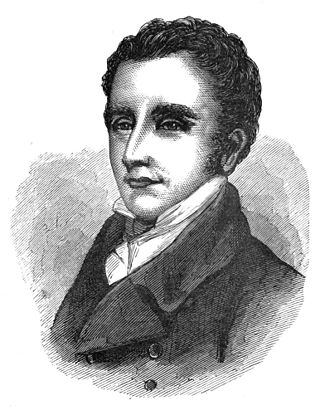
Thomas Longman was an English publisher who founded the publishing house of Longman.
Philip Rundell (1746–1827) was a highly prosperous English jeweller, fine jewellery retailer and master jewellery makers' business proprietor, known for his association with royalty. With John Bridge, he ran and co-owned Rundell and Bridge, a firm with widespread interests in the jewellery and precious metal trades.
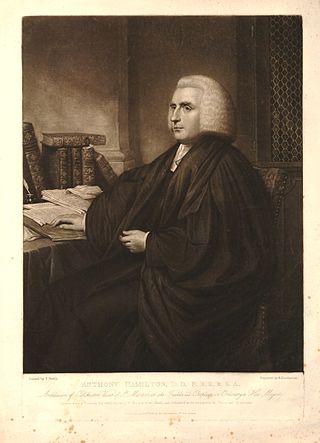
Anthony Hamilton (1739–1812) was an Anglican priest, Archdeacon of Colchester from 1775.
Sir Francis Gosling (1719–1768) was a partner in Goslings Bank, later Goslings and Sharpe, one of the banks merged into Barclays Bank in 1896. He was an Alderman of the City of London.
Thomas Norton Longman (1771–1842) was an English publisher, who succeeded to the Longman's publishing business in 1793.

